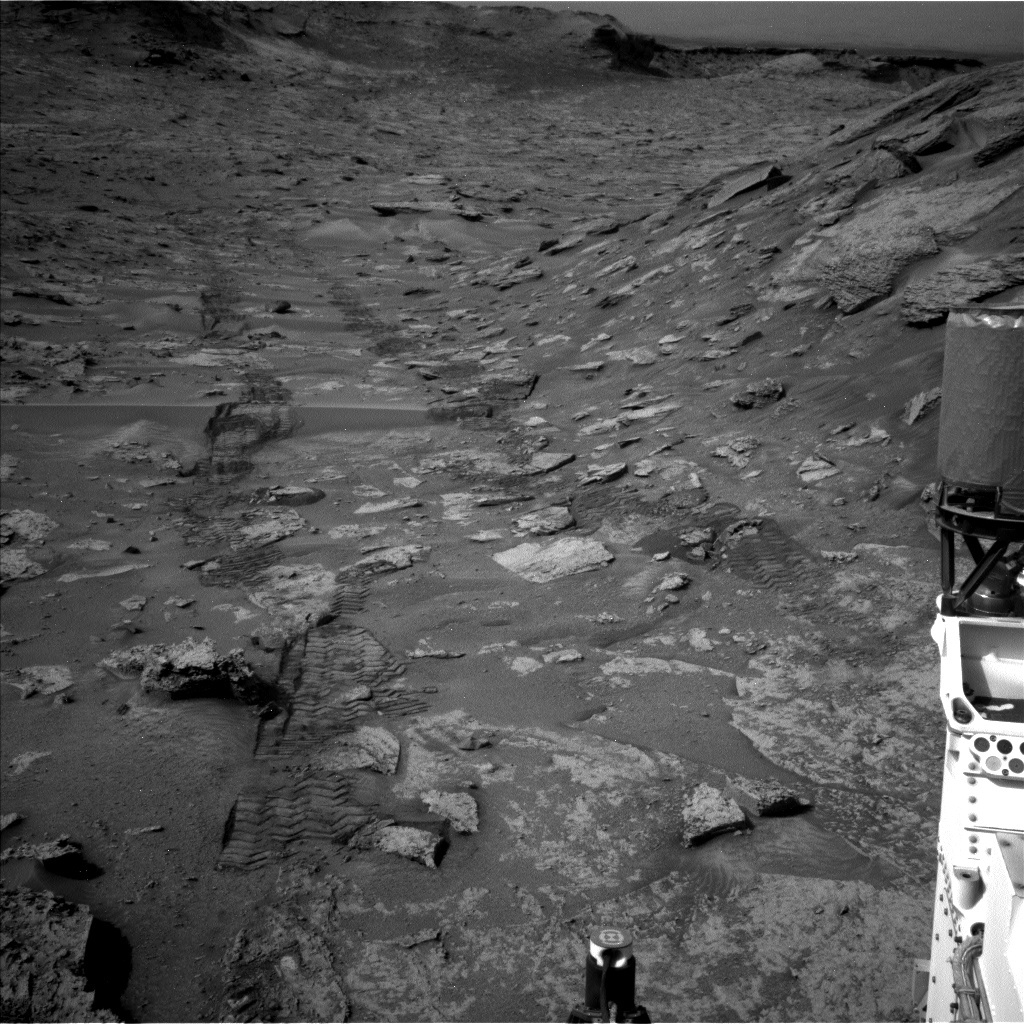3 min read

Curiosity is getting a good start to the week! The weekend plan completed successfully, leaving some great rover tracks behind us as seen in the attached picture. Today my role was “RP2”, which supports the Rover Planners for the day in planning the arm and drive activities, and doing our final modeling and verification steps before sending the commands to the rover.
Sol 3469 will start out with a lot of camera imaging and laser zapping! We’ll begin with an atmospheric dust observation with the Navcam. Mastcam will image the veins in the bedrock in front of the rover called “Partang” then ChemCam will fire the laser on it. ChemCam will then take a mosaic of the “Mirador” butte. After that, Mastcam will re-image Partang to see how the ChemCam laser affected the target. Once all that imaging is done, we’ll use the robotic arm. APXS opted out of observations today due to the bedrock being sandy and the APXS integration timing would’ve been suboptimal to get good data. We’ll take some MAHLI images of the targets “El Oso” and “Parima.” El Oso is a cluster of clasts on a rock that we aren’t sure are loose or attached. The arm Rover Planner described them as looking like they are crumbling off the block. We’ll see in those MAHLI images! Parima is a vein in the bedrock. Both targets are raised relative to the ground, so the stereo MAHLI images of these targets should be a good reason to grab your stereo glasses. Because of the dusty targets, MAHLI wasn’t interested in imaging closer than 5cm, which made the arm activities relatively easy to command today.
To accommodate all this great science, we are splitting our drive to occur in two segments and allow MRO to communicate with the rover in between those segments. It is a bit unusual for the Rover Planners to break up a drive into multiple segments, so while the arm was relatively easy today, the drive was complex. Luckily the Rover Planners have a great store of documentation to help refresh ourselves on all the things we need to do to safely pass the information on how the first drive segment completed before continuing in the second segment. This approximately 40-meter, two-part drive along our strategic route navigates the rover between some large rock piles as we continue to head generally south. We’ll gain about 5 meters in elevation. Once the second part of the drive completes, we’ll take a bunch of images of our final location to prepare for the next plan’s activities.
On sol 3470 we’ll have some environmental monitoring imaging, along with an autonomously selected ChemCam target.
Let’s keep climbing!
Written by Keri Bean, Rover Planner Deputy Team Lead at NASA's Jet Propulsion Laboratory







